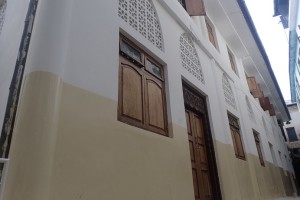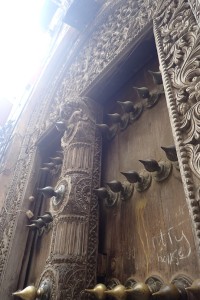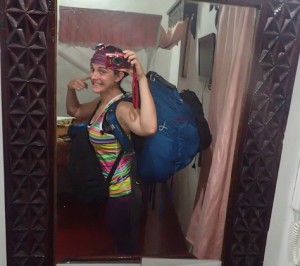 My first day in Zanzibar started with a very exciting Ferry ride from Dar Es Salaam, which you can read about here.
My first day in Zanzibar started with a very exciting Ferry ride from Dar Es Salaam, which you can read about here.
After debarking from the ferry, I was scooped up by a desk attendant from The Pyramid Hotel, where I had pre-booked for two nights. He whisked me off on a short but dizzying five minute walk through the narrow streets of Stone Town, to the hotel.
As I was checking in, I chatted with the staff about tours for the city, and I was able to book a Stone Town walking tour for 9:30 that morning, as well as a Spice Tour for the next day. That settled, I was invited to partake in hotel breakfast, and I eagerly dropped my bags in my room and went upstairs to the rooftop restaurant to grab a bite and wait for my tour guide to arrive.
At 9:30 I was pleasantly surprised to find that for my $25, I had a private guide for my walking tour of the city! After exchanging pleasantries, we headed right off into the town!
Now, Stone Town actually reminds me of Tsvat in Israel… the streets are even more narrow, but they were created ages ago from stone just for the purposes of people in the town, nothing else. In Stone Town I’d say the majority of the streets are meant for walking only, but some people bike and *lots* motorbike through the clustered, no-name paths. After two turns with my guide, I was 100% turned around.
Annnddd this is why I went with a guided city tour! The first stop in the tour was the local market, of which the highlight is the fish market. My only other fish market experience is Tsukiji in Tokyo (which I can’t believe is being demolished for the 2020 olympics, btw!), so I was eager to compare.
The Stone Town fish market is similar in some ways and different in others. Both markets have the freshest catches displayed, with the fishermen or their families hawking the wares in two sections, both for home purchasing AND wholesale. The wholesale sections are completely different though, and the home use areas in Stone Town is much smaller. There are also no restaurants nearby for fresh sushi. That said, it still was awesome to see the local market. I was able to snap a few photos with dealers who didn’t mind a snapshot!
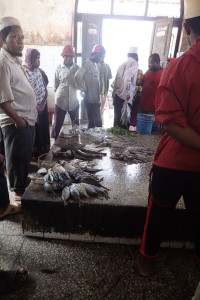
After the fish market, we checked out the meat market as well, which was completely surreal. There were gigantic slabs of ALL kinds of cuts of beef just hanging from wall hooks or displayed on boards in stalls. It was very strange for my western brain, which has been trained to always refrigerate raw beef, and the sellers in here were much less thrilled about photos, so I don’t have as many.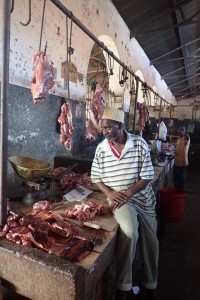
Next up was spice shopping, during which I TOTALLY got had. My guide asked if I wanted any, which I said I did, and I asked him what the packages should cost. He told me not to worry and to pick out what I wanted and he would haggle for me.
Well… HE DIDN’T!
I picked out a bunch of things I wanted, and then I looked to him and he just was playing on his phone.
Ughhhhh.
So, completely unprepared to haggle, I got a terrible price for the bounty I picked out. I *should* have just walked away, but I was already invested. Boooo. Oh well, better luck another day, eh?
We then headed over to the Anglican Church, which is also the site of the former slave market. The church is on top of the grounds where the whipping post stood many years ago, and the tiles in the ground actually pay homage to this historic site. There is a circle of tile where the post once was, and the dark red tiles around the floor are there to symbolize the blood spilled by those who were forced into slavery.
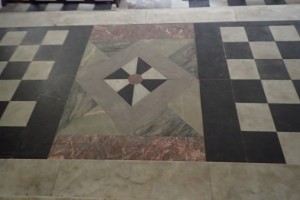
Outside of the church, there is also a monument/replica of the dugouts the enslaved people were forced to wait in prior to their whippings. They were whipped, by the way, to determine their auction price. The more you cried, the less you were worth.
The last place we were able to see was the waiting area – once they were ripped from their families, people were crammed into two underground rooms (gender segregated) to await whipping and subsequent sale. The wait could be anywhere from a few hours to three days – people were fed, but they were not released from the rooms for anything, including the bathroom.
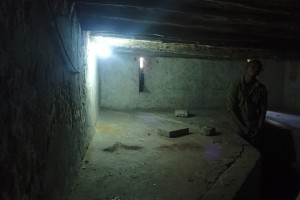
Once we concluded the slave market area, we had a bit of a walk to our next destination, so my guide was explaining to me some of the architectural history of Stone Town, and specifically focusing on the doors. Apparently, you can tell the architectural history of the building based on whether the front door’s frame is curved at the top, or straight across. Curved is Arabic style, and straight across is Indian style.
Door viewing complete, we also walked past the water and Fodohori Gardens, which is a really adorable open-air plaza, which converts into street-food central around dinner time! They also offer free WiFi and lots of sitting space!
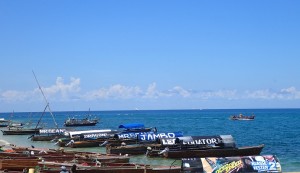
Finally, we arrived at the Palace Museum, and I was scooped up by a museum guide for this portion of my tour. To be quite honest, the Palace Museum is full of a LOT of furniture from past Zanzibarian sultans, which wasn’t *super* thrilling to me. But if that’s your jam, definitely check it out! The one thing of the Sultans I thought was cool was that from the balcony you can see into the yard, which is actually where all but two of the sultans have been laid to rest.
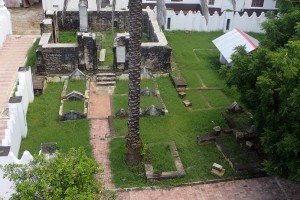
Otherwise, from the museum I really enjoyed the room dedicated to Princess Salme, who, essentially, was the youngest child of Sultan Said and a concubine… She ended up becoming incredibly well educated and moving away to Germany, taking the name Emily Ruete. Her wiki is actually really informative, I highly recommend a quick perusal.
After Palace Museum, the final stop was the Old Fort, which basically is now used as a sweet concert venue, and also as a merchant area. The “concert venue” actually looks pretty awesome – I wish something had been available to see while I was there.
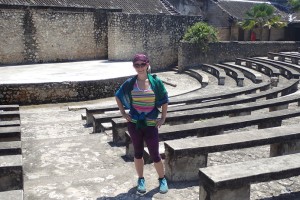
The shopping area actually drew my attention, as I needed a few gifts. I won’t mention them here since this will be read before gifts are received, but rest assured, I did well. I also got a henna! I found out later that this henna in Zanzibar, “black henna” is actually super dangerous and can cause severe allergic reactions, so I don’t recommend getting one since it’s pretty risky. However, I survived (luckily). I need to do a dye test to make sure I’m not allergic to my hair dye now, so everyone keep your fingers crossed on that one.
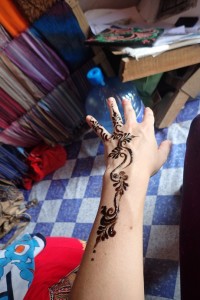
Instead of getting dropped back off at my hotel, I asked my guide to drop me off at a restaurant locals eat at, so he showed me to a little unnamed bistro-esque place a few turns from my hotel. He said “everything costs 6,000, don’t let them overcharge you and enjoy!” and walked off, leaving me to my own devices. I ordered chicken biryani, and I was not disappointed. They charged me 6,000, which is aboouuttt $3. I. Will. Take. It.
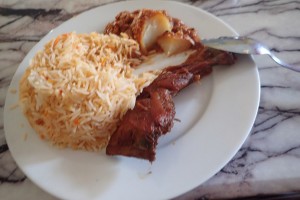
And there you have it! My whole Stone Town City Tour day, in a nutshell!
